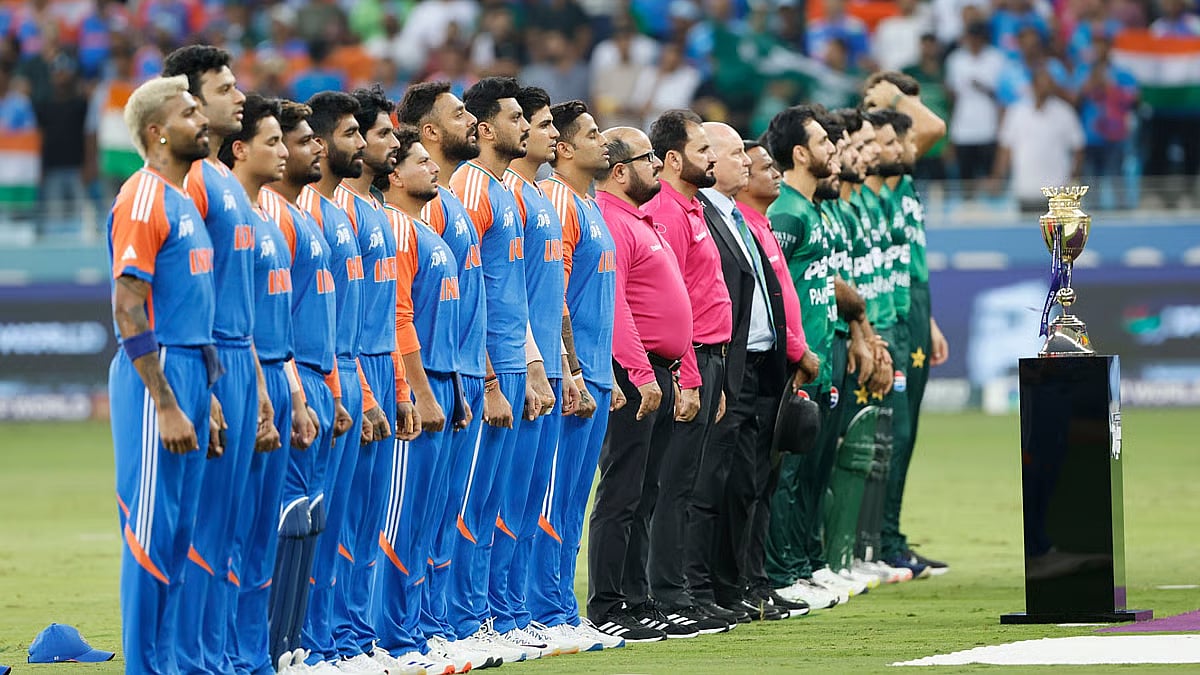Bengalis in India, especially in West Bengal, are euphoric that the Bangladesh government has revoked its earlier ban on the export of hilsa fish to India. Now they'll be able to relish it again.
The passion for the bony fish (Tenualosa ilisha) in West Bengal has increased since Partition and the 1971 war when millions of Bengali Hindus, the Bangals, had to leave what was then East Pakistan, where the best hilsa (from the Padma river) is still found, and cross over to India. Though West Bengal is the largest producer of freshwater fish in the country, and has a wide variety of them, the Bangladeshi hilsa rules the heart of most Bengalis.
The hilsa is found in most perennial rivers in Asia that empty into the region's seas, from Iraq in the West to Myanmar (Burma) in the East. Species can differ. So can the taste. Much like the salmon of North America, the hilsa, or ilish in Bangla, enters the river from the sea to swim upstream for hundreds of kilometres and spawn. Then it returns to its salty abode. Hilsa from the sea is tasteless; in the river it's delicious. One possible trigger for the transformation in taste: during the monsoon, the swollen Hooghly river carries plenty of detritus-goodies for the fish into the ocean and the hilsa gorges on this in preparation for its marathon round trip from sea to river and back again.
Before the Farakka barrage was built on the Ganga in North Bengal, the hilsa used to be spotted as far upstream as Allahabad. Today, it's rare to find it even at Kolaghat near Calcutta. The best hilsa are the ones that weigh 1.5 kg to 2 kg apiece. The hilsa is not sliced up and sold in parts, unlike say the rohu, because its tail and head — unlike that of many other varieties — aren't in demand. Those who cannot afford the big fish buy the smaller ones weighing less than 500 gm apiece, and it's overfishing of this size that has sent stocks dwindling. There was a time when East Bengal football supporters would celebrate the team's victory by buying the fish. Not any longer.
Mani Shankar Mukherjee, the renowned Bengali novelist who writes under the nom de plume of Shankar, says the Bengali craze for hilsa is not reflected proportionately in Bengali literature. But there's folklore. There's one story about Swami Vivekananda, he says, travelling down the Padma river in 1899. A fisherman offered him 16 hilsas — presumably the large ones — for Re 1, adding four more free. Vivekananda then stepped ashore to look for pui saag, a type of green, together with which he'd cook the ilish dish. A villager had pui at home, but wanted to be accepted as Vivekananda's disciple in return for parting with it. Swami agreed. All for the hilsa.
There's a book at the famous India House in London. The book describes 365 preparations of hilsa. In other words, one can have a novel dish each day for a year! Not just Bengalis, others have also fallen in love with hilsa. The famous theatre personality, the late Habib Tanveer, was hilsa's great and unabashed admirer. He observed that the Bangladeshi hilsa was tastier than Hooghly hilsa because the former swims against the tide. Independent Bangladesh's first President, Sheikh Mujibur Rahman, personally served “Shorshe Ilish” (hilsa in mustard), when he invited Indira Gandhi to Dhaka in 1971.
Connoisseurs say that hilsa cooked in mustard with Basmati rice and garden fresh green chillies tastes celestial. When Ghalib went to Calcutta from Delhi, he too got enamoured of the “sparklingly shining and smart-looking fish” (Caudwell's phrase for hilsa) and mentioned this in his Persian letters. He even called it “Baashiq”, though I've never found this word in any Urdu, Persian and Arabic dictionary. But Ghalib’s “Dastambu” (compilation of his Persian letters) has this word. Even John Borthwick Gilchrist, the first professor of Hindustani at Calcutta’s Fort William College, was smitten by the sui generis taste of hilsa and called it “the crown of all fish”.
The fastidious lovers of this “queen of fish” are of the view that people relish hilsa because it naturally tastes a bit salty. Though a tad thorny, many of its lovers like it because of this very reason! It’s said that the real taste of hilsa lies in a deft manner of removing its thorns from the flesh. This really requires some sort of a skill. Even food experts say that “thornier a fish, tastier it is”. Only flesh makes a fish taste a bit bland, like tuna and kingfish. By the way, hilsa has 10,000 bones!
One more thing that makes hilsa altogether different from other fish is that it distinctly tastes below par during the mating season and when it produces eggs. Even die-hard hilsa lovers avoid it during this period and turn to other varieties. The late poet Subhash Mukherjee called it “separation from one’s beloved”!
And here's a method of cooking mustard hilsa, which I chanced upon in a hoary-old book at Kamalpur (the naval base of the erstwhile East Pakistan during the 1971 war). The most important aspect of this dish is the mustard sauce (kashundi), which should neither be very concentrated, nor should it be diluted to the extent of tasting like pungent water. The flesh of hilsa fish soaks up the tanginess of mustard and when you bite, you feel as if you're sinking your teeth into a crunchy, yet juicy piece of marinated fish-steak. And with Basmati rice, it makes an eater, nay connoisseur, say, “Agar firdaus warrue-zaminast / Haminast, haminast, haminast” (If there's a heaven elsewhere on earth / It's here, here, here).
It's indeed a romantic saga how a Bengali's taste buds are so inseparably attached to this “fish of all fishes”.
Sumit Paul is a regular contributor to the world’s premier publications and portals in several languages












